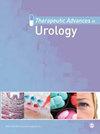Prostatic stents: a narrative review of current evidence
IF 2.6
4区 医学
Q2 UROLOGY & NEPHROLOGY
引用次数: 0
Abstract
Benign prostatic hyperplasia (BPH) is a common chronic urologic condition affecting approximately 50% of men above the age of 60. As per European Association of Urology Guidelines, BPH can be treated according to a stepwise approach starting from a conservative management, a pharmacologic approach, and finally surgery. Both medical and surgical therapies have side effects, impacting on ejaculation and sexual function and patients with multiple comorbidities might not be considered surgically suitable candidates. Prostatic stents offer a minimally invasive procedures in an out-patient setting, possibly under local anaesthesia. Utilized since the 1980s, the past stents encompassed permanent (epithelializing) or temporary (non-epithelializing) devices, like the Uro-Lume (American Medical Systems, Minnetonka, MN, USA) and the Memokath, or Memotherm (Engineers & Doctors A/S, Denmark), and the biodegradable stents made of self-reinforced poly-L-lactide or braided poly lactic-co-glycolic acid. Previous stents however showed a quite high rate of complications among which pain, incontinence, infections, stent migration or blockage, and incomplete degradation that might lead to premature removal of stent. The stents currently available on the market instead are the temporary device Allium Triangular Prostatic Urethral Stent (Allium Urological Solutions, Caesarea, Israel) and the temporary stent SPANNER (AbbeyMoor Medical, Inc., Parkers Prairie, MN, USA), which might be used in case of bladder outflow obstruction, post-operatively, or for acute urinary retention. Studies showed encouraging results, in terms of effectiveness and safety improving patients’ quality of life and International Prostate Symptom Score, but longer-term studies are needed to identify the most suitable patients who might benefit from their use. Newer stents and nitinol devices are currently investigated, and we are waiting for the results of the ongoing clinical trials.前列腺支架:现有证据综述
良性前列腺增生症(BPH)是一种常见的慢性泌尿系统疾病,约有 50%的 60 岁以上男性患有此病。根据欧洲泌尿外科协会指南,良性前列腺增生症的治疗可采取循序渐进的方法,从保守治疗到药物治疗,最后再到手术治疗。药物和手术疗法都有副作用,会影响射精和性功能,而且有多种合并症的患者可能不适合手术治疗。前列腺支架可在门诊环境下进行微创手术,可能需要局部麻醉。自 20 世纪 80 年代开始使用的支架包括永久性(上皮化)或临时性(非上皮化)装置,如 Uro-Lume(美国医疗系统公司,美国明尼苏达州明尼通卡市)和 Memokath 或 Memotherm(丹麦 Engineers & Doctors A/S),以及由自增强聚左旋乳酸或编织聚乳酸-共-乙醇酸制成的可生物降解支架。然而,以前的支架显示出相当高的并发症发生率,其中包括疼痛、大小便失禁、感染、支架移位或堵塞,以及可能导致过早移除支架的不完全降解。目前市场上的支架有临时装置 Allium 三角形前列腺尿道支架(Allium Urological Solutions,以色列凯撒利亚)和临时支架 SPANNER(AbbeyMoor Medical, Inc.,美国明尼苏达州 Parkers Prairie),可用于膀胱流出道梗阻、术后或急性尿潴留。研究显示,在提高患者生活质量和国际前列腺症状评分的有效性和安全性方面取得了令人鼓舞的结果,但还需要进行更长期的研究,以确定哪些患者最适合使用这种疗法。目前正在对更新的支架和镍钛诺装置进行研究,我们正在等待正在进行的临床试验的结果。
本文章由计算机程序翻译,如有差异,请以英文原文为准。
求助全文
约1分钟内获得全文
求助全文
来源期刊

Therapeutic Advances in Urology
Medicine-Urology
CiteScore
3.70
自引率
0.00%
发文量
39
审稿时长
10 weeks
期刊介绍:
Therapeutic Advances in Urology delivers the highest quality peer-reviewed articles, reviews, and scholarly comment on pioneering efforts and innovative studies across all areas of urology.
The journal has a strong clinical and pharmacological focus and is aimed at clinicians and researchers in urology, providing a forum in print and online for publishing the highest quality articles in this area. The editors welcome articles of current interest across all areas of urology, including treatment of urological disorders, with a focus on emerging pharmacological therapies.
 求助内容:
求助内容: 应助结果提醒方式:
应助结果提醒方式:


